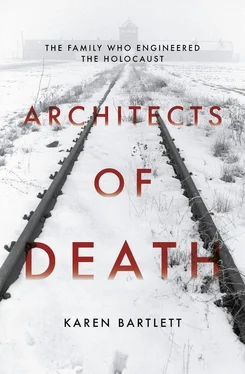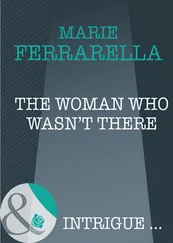Braun–Prüfer head to head in Soviet Interrogation, Landesarchiv Thüringen - Hauptstaatsarchiv Weimar.
Fritz Sander letter to Topf and Sons regarding patent, Landesarchiv Thüringen - Hauptstaatsarchiv Weimar.
Ibid.
Ibid.
Fritz Sander, Soviet interrogation report, Landesarchiv Thüringen - Hauptstaatsarchiv Weimar.
Kurt Prüfer, Soviet Interrogation, Landesarchiv Thüringen - Hauptstaatsarchiv Weimar.
Schüle, op. cit., p. 201. ‘SS men were forever coming and going at Topf… not a secret.’ AS footnote 170: Hans Mommsen concludes that ‘ordinary workers, especially if they had Communist leanings, recognised the reality of the Holocaust more clearly than nationalistically inclined functionaries in the government apparatus, who didn’t want to believe what they were just as capable of knowing’. Hans Mommsen, ‘Erfahrung, Aufarbeitung und Erinnerung des Holocaust in Deutschland’, in Hanno Loewy (ed.), Holocaust: Die Grenzen des Verstehens, Reinbek 1992, pp. 93–100, this quote is taken from p. 95.
AS footnote 171: Author interview with Walter Bredehorn on 5 May 2010.
AS footnote 172: It has been proven that the workers in the SS camps included Soviet forced labour, i.e. the very men with whom KPD members stayed in contact with for political reasons. Iwan Hanjutschenko, a young Ukrainian forced labourer, reported that he and a German foreman built trolleys for inserting coffins, which were used with the double- and triple-muffle furnaces in the camps, and which can be seen in the crematorium of the Buchenwald Memorial. Author interview with Iwan Hanjutschenko, 6 May 2003.
Schüle, op. cit., p. 196. ‘The flames from the incineration were visible for miles around.’
Schüle, op. cit., p. 27.
AS footnote 178: Piper, Vernichtung , p. 286f [Bibliography lists a number of books by Piper, Franciszek, but none with Vernichtung [extermination or annihilation] as the key word in their title.]
Schüle, op. cit., p. 209 – efficiency of the crem – these are outstanding figures writes the SS.
AS footnote 193: ThHStAW, Collection Jean-Claude Pressac Nr 42, sheet 212, and Buchenwald Memorial Archive, Pressac Collection, sheet 875.
Schüle, op. cit., p. 209. The sentence at the start of this paragraph makes it clear that the info comes from ‘the Topf fitter Heinrich Messing’s timesheet for the period from 8 Monday to 14 Sunday March 1943’.
Karl Schultze’s Soviet interrogation record, Landesarchiv Thüringen - Hauptstaatsarchiv Weimar.
Ibid.
Schüle, op. cit., pp. 212–13.
AS footnote 203: Record of the statement by Henryk Tauber, former prisoner in the Auschwitz concentration camp and member of the Sonderkommando [Special Unit – prisoners working in the gas chambers/crematoria], in: Piper, Vernichtung , p. 287f [see my note above.]
Ibid.
Karl Schultze’s Soviet interrogation record, Landesarchiv Thüringen - Hauptstaatsarchiv Weimar.
Schüle, op. cit., p. 219.
Schüle, op. cit., p. 219.
AS footnote 230: ThHStAW, Collection Jean-Claude Pressac Nr. 42, sheet 452; also Buchenwald Memorial Archive, Pressac Collection, sheet 1117.
Ibid.
Schüle, op. cit., p. 230.
AS footnote 265: Topf to the SS Construction Management Dept, Auschwitz, 2 July 1943, ThHStAW, Collection Jean-Claude Pressac Nr. 42, sheet 388; also Buchenwald Memorial Archive, Pressac Collection, sheet 1053.
Topf and Sons sixtieth anniversary commemorative booklet, Landesarchiv Thüringen -Hauptstaatsarchiv Weimar.
Schloss and Bartlett, op. cit., p. 130.
Schüle, op. cit., pp. 192–6.
AS footnote 145: Karl/Noack, Angeklagter [PK:Accused], p. 67f.
Schüle, op. cit., p. 223. Special unit notices gas chambers being dismantled for use elsewhere.
AS footnote 277 : Inmitten des grauenvollen Verbrechens. Handschriften von Mitgliedern des Sonderkommandos [ In the Midst of Heinous Crime. Handwritten notes by members of the Sonderkommando, State Museum Auschwitz-Birkenau, Oświeçim 1996, p. 184f. This handwritten note was found next to Crematorium III in the summer of 1952. Also Ibid., p. 175.
Schüle, op. cit., pp. 234–5. Kurt Prüfer memo regarding rebuilding at Mauthausen.
AS footnote 280: Underlining in original. Quoted from: Terezin Memorial Archive, A 8845 Mauthausen, sheets 1–3.
Ernst Wolfgang Topf statement, Power without Morals, 1958, Landesarchiv Thüringen - Hauptstaatsarchiv Weimar.
Annegret Schüle, op. cit., pp. 240–243. Ludwig Topf’s explanation of the camps to the workers.
AS footnote 10: Tuchel, Johannes: Die Inspektion der Konzentrationslager 1938–1945. Das System des Terrors [ Inspection of the Concentration Camps 1938–1945. The Terror System ], Edition Hentrich, 1994, p. 15.
AS footnote 11: notes from the discussion, belonging to files. Works Council, 27.4.1945, ThHStAW, Collection Jean-Claude Pressac Nr 34, sheet 229f. Emphases in original.
Ibid.
Ibid., p. 243.
Ibid., pp. 248–9. Ludwig Topf’s suicide note.
AS footnote 35: Ludwig Topf, 30/31.5.1945, sheet 6 of transcript of files, ThHStAW, Collection Jean-Claude Pressac Nr 34, sheet 211.
Ibid., p. 250. Ernst Wolfgang Topf’s explanation of Ludwig’s suicide to workers.
AS footnote 41: Notes from the meeting, 8.6.1945, ThHStAW, J. A. Topf & Söhne Nr 427, sheets 75ff; Collection Jean-Claude Pressac Nr 34, sheets 232ff.
Ibid., p. 248. Machemehl’s account of the suicide.
AS footnote 31: Handwritten report by Machemehl (Ma), 31.5.1945, ThHStAW, J. A. Topf & Söhne Nr 427, sheets 244f; Collection Jean-Claude Pressac Nr 34, sheets 212f.
Ibid., pp. 254–5. Topf to resume production memo.
AS footnote 64: Military Government of Germany Erfurt, 22 June 1945, ThHStAW, Collection Jean-Claude Pressac Nr 80, sheet 66.
AS footnote 65: Post list 21.6.-3.9.2945, sheet 2, ThHStAW, Collection Jean-Claude Pressac Nr 80, sheets 92–4.
AS footnote 66: A letter from Kurt Schmidt to Ernst Wolfgang Topf includes the following: ‘The New Production permit relates to the Malting, Silo and Mill construction departments, excluding furnace systems. We can of course continue to carry out repairs to furnace systems.’ Kurt Schmidt to E. W. Topf, 18 July 1945, ThHStAW, Collection Jean- Claude Pressac Nr 80, sheet 77.
AS footnote 67: File note, operations division, Braun, 11 October 1945, ThHStAW, Collection Jean-Claude Pressac Nr 80, sheet 117.
Ibid., pp. 256–7. Archive note about Major Kriwenzow.
AS footnote 76: Wiederinbetriebssetung [Resumption of production], 12.9.1945, ThHSt- AW, Collection Jean-Claude Pressac Nr 80, sheets 98–100.
Читать дальше












